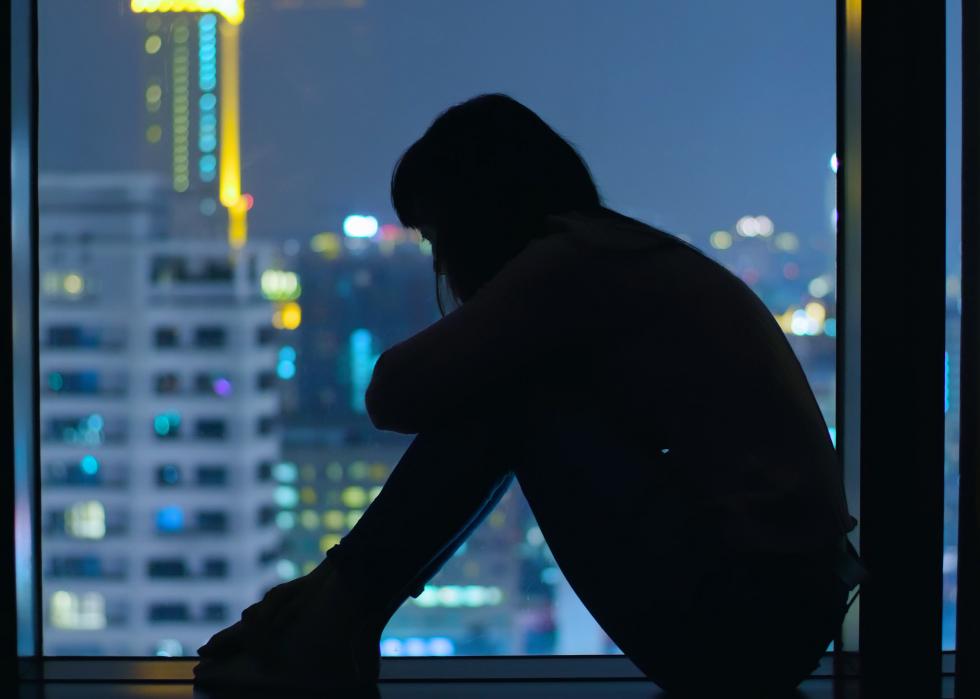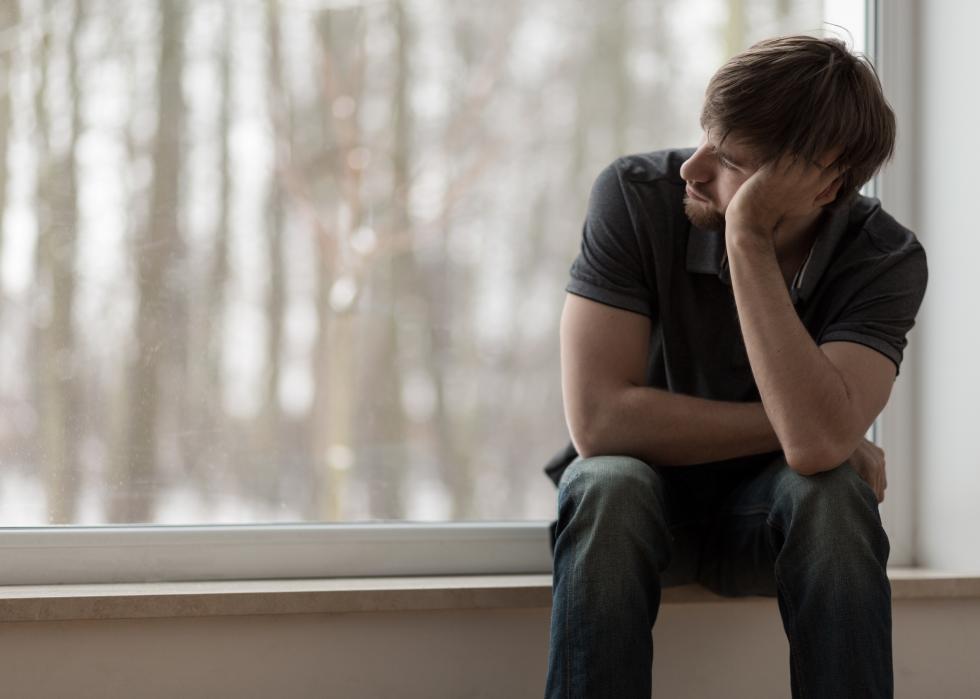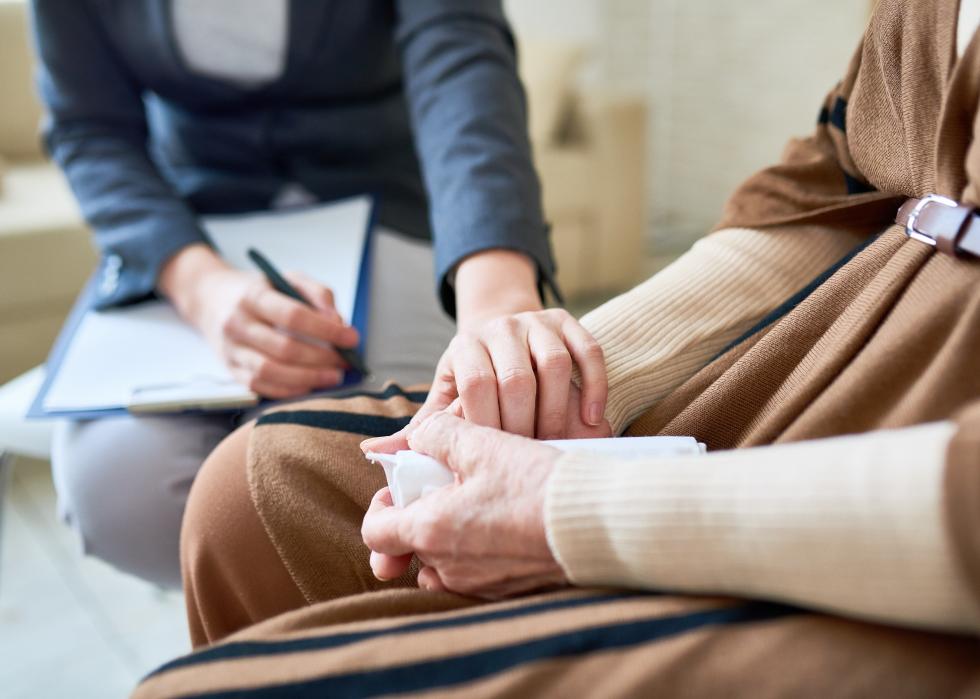
25 facts about mental health
Note: This article discusses suicide.
Defined by the American Psychiatric Association as "health conditions involving changes in emotion, thinking or behavior," mental illness affects millions of Americans, often disrupting their social lives, personal relationships, and school or career performance. Although many of them have found relief through professional treatment, many, many more never will—but not because treatment is not possible. It is in most cases, but a variety of factors prevent all too many sufferers from getting the help they need or even seeking it out in the first place.
Now is an especially dangerous time. Instances of mental illness and its most negative outcomes—most notably suicide—were already on the rise for the past two decades before the pandemic struck. But the coronavirus crisis—and the stress and uncertainty that came with it—have led to dramatic spikes in the number of people seeking help with problems involving their mental health and well-being.
America's mental health crisis is now and has for a long time been aggravated by widespread misinformation and ignorance about mental illness and the people who struggle with it. The nature of mental illness is widely misunderstood, as are its causes, consequences, and potential treatments and outcomes. Those who suffer from mental illness battle not only the condition itself, but public perceptions and attitudes that are commonly unhelpful, often harmful, and usually rooted in misinformation. The following attempts to rectify some of that by presenting the most current and accurate information on the most pressing aspects of mental health in America.
Stacker developed a list of 25 key facts about mental health by using data and expert information from sources like the Centers for Disease Control and Prevention (CDC), the American Psychiatric Association (APA), the National Institute of Mental Health (NIMH), Mental Health America (MHA), the National Alliance on Mental Illness (NAMI), and the Anxiety and Depression Association of America (ADAA).
These are the facts about mental illness and the millions of Americans who suffer from it.

Mental illness affects tens of millions of Americans
About one in five American adults struggle with mental illness, according to the CDC. That’s about 43.4 million people 18 and older. About one in 25 adults—nearly 10 million Americans—grapple with serious mental illness that impairs their daily lives.

Mental illness usually begins at a young age
About 20% of children have suffered from what the CDC classifies as a “seriously debilitating mental disorder,” most commonly an anxiety, behavior, or mood disorder. Three out of four cases of chronic mental illness begin by age 24 and half begin by age 14.

No demographic is immune
In the words of the APA, “Mental illness does not discriminate.” It can and does affect individuals from all socioeconomic backgrounds, races, religions, sexual orientations, genders, geographic locations, cultures, and ages.

Some demographics are more vulnerable
Women are significantly more likely than men to struggle with mental illness, including serious mental illness, according to NIMH, particularly in cases of depression. Mental illness is most prevalent in young adults 18-25 and individuals from multiracial backgrounds.

Many factors can contribute to mental illness
Mental illness can be caused by genetics, life experiences, environmental factors, stress and trauma, individual biochemistry, drug and alcohol use, traumatic brain injury, or any combination of them all, according to MHA. In many cases, it's not possible to trace the exact source of an individual's condition.

Know the warning signs
Depending on the condition and the individual, mental illness may or may not include red-flag symptoms like a decline in hygiene, significant weight loss or gain, a sudden increase in drug use or reckless behavior, or a departure from reality in the form of paranoia, delusions, or hallucinations. Symptoms of mental illness are complex and can vary widely depending on a variety of factors, but extended periods of sadness or lethargy are common symptoms, according to NAMI, as are radical changes in sleeping habits, personality, or behavior. A sudden increase in episodes of overwhelming panic or fear could be a warning sign, as could thoughts of self-harm, extreme changes in sex drive, and a withdrawal from friends and social activities.

Anxiety disorders are the most common
Affecting more than 40 million adults—about 18% of the population—anxiety disorders are the most common mental illness in the United States, according to the ADAA. That includes conditions like generalized anxiety disorder, social anxiety disorder, specific phobias, and panic disorder.

Anxiety often comes with depression
Those who suffer from an anxiety disorder are much more likely than the general population to also suffer from depression, and vice versa. About half of the people diagnosed with depression will also be diagnosed with an anxiety disorder.

There are many other kinds of mental illness
Mental illness can take many forms beyond anxiety disorders and mood disorders like depression and bipolar disorder. Among the most common are eating disorders, personality disorders, behavioral disorders, post-traumatic stress disorder, obsessive-compulsive disorder, substance abuse disorders, and psychotic disorders like schizophrenia.

Many sufferers wage multifront battles
People who struggle with serious mental illness are at a greater risk for cancer, diabetes, and other chronic diseases, according to the NAMI. Roughly one in five struggle with substance abuse at the same time as mental illness.

They don’t struggle alone
NAMI estimates that at least 8.4 million Americans serve as caregivers for adults with mental or emotional illness. On average, they spend 32 unpaid hours per week providing care.

The ripple effects touch the entire community
Caretakers are impacted most directly, but the realities of America’s mental health crisis affect virtually everyone—particularly when sufferers don’t receive adequate treatment. Individuals with mental illness account for one in eight emergency room visits, according to NAMI, and one in five homeless people have a serious mental illness. Seven out of 10 youths in the juvenile justice system have at least one mental illness and 20% of adult jail inmates suffer from serious mental illness.

LGBTQ+ individuals are among the most at-risk
According to MHA, the LGBTQ+ community is one of America’s most vulnerable populations, with 39% reporting mental illness—twice the adult national average. It is important to note that being gay, lesbian, bisexual, or transgender is not a mental illness, nor does sexual orientation contribute to mental illness. Hostile societal attitudes, rejection from families and communities, bullying, discrimination, and even violence that LGBTQ+ individuals disproportionately endure can degrade mental health and exacerbate existing mental health issues.

LGBTQ+ youth are especially vulnerable
LGBTQ+ adolescents, teens, and young adults are among the most at-risk groups in the country, and are far more likely than their heterosexual peers to experience mental illness. They’re also more likely to be discriminated against when seeking treatment and to experience negative conditions that disproportionately affect the mentally ill, such as homelessness, unemployment, substance abuse, and violent or sexual predation.

Mental illness is treatable and manageable
Despite widespread misinformation to the contrary, mental illness can be managed and mitigated, according to the APA, through a program of evaluation and diagnosis followed by treatment. That treatment could include psychotherapy, prescribed medication, and hospital or residential treatment. The APA also notes, "The vast majority of individuals with mental illness continue to function in their daily lives."

Too many people go without treatment
According to MHA, 56% of adults and 61.5% of youths with mental illness do not receive any treatment. Contrary to a common stereotype, however, it’s often not for lack of trying. Millions of Americans of all ages report giving up after repeated attempts to get help in vain.

Social stigma is widespread and destructive
Aside from the actual conditions themselves, the biggest challenge facing many people with mental illness is the deeply entrenched social stigma that surrounds it. Misinformation is accepted as truth among large segments of the population, and uninformed negative attitudes and perceptions about mental illness and the people who suffer from it are common. Among the most common stigmatizations are that a person with depression is just lazy or sad, that a person with bipolar disorder is just irrational or lacking self-control, that substance abuse disorders are the result of character flaws or individual weakness, that people with anorexia should “just eat,” or that a person diagnosed with a mental illness can’t hold a job or function in society, none of which are helpful or true.

Stigma has real consequences
The stigma that surrounds mental illness can and does have disastrous consequences by increasing anxiety, stress, depression, and feelings of hopelessness and isolation in people who are already suffering. It can encourage shunning from friends, co-workers, classmates, and even family members, and it can lead to bullying, harassment, and difficulty securing housing or employment. Perhaps most importantly, stigma often prevents those who need help and treatment from seeking it.

People with mental illness can thrive and contribute
Social stigma leads many to incorrectly assume that people with mental illness can’t maintain healthy relationships, excel in academics, hold jobs, and be productive members of society. The truth, however, is that when they receive the treatment they need, they tend to be more productive at work, absent less often, and require less individual spending on medical and disability costs than the general public.

Psychiatric medications are largely safe and effective
Stigma also surrounds the treatment of patients, particularly when it comes to psychiatric medications, which many write off as "happy pills" that simply drug patients into a state of numbness. The truth is that when used in conjunction with therapy and other treatments, psychiatric medications have proven to be effective and beneficial for large percentages of the patients who take them.

Only a tiny percentage are violent or unpredictable
One of the biggest myths surrounding people with mental illness is that they’re prone to fits of violence and other unpredictable outbursts. The truth, according to MentalHealth.gov, is that the overwhelming majority are no more likely to be violent than the general population. Just 3%-5% of violent crimes are committed by people with mental illness.

They’re much more vulnerable to predation
Mentally ill people are not, by and large, a threat to society—it’s actually the other way around. People with severe mental illness are more than 10 times more likely to become victims of violent crimes than the population as a whole.

Suicide is the most pressing threat
Suicide is the #2 leading cause of death in the United States among young people 10-34 and one of the leading causes of death overall, according to NAMI. Nine out of 10 people who die by suicide first experience symptoms of a mental illness, and nearly half are diagnosed with a mental health condition. Suicide rates have increased by more than 30% since 2001.

Suicide is far more likely among certain demographics
Three out of four people who die by suicide are men, according to the National Institute of Mental Health (NIMH); and seniors, Native Americans, and members of the LGBTQ+ community are far more likely to take their own lives than the general population. LGBTQ+ youth are four times more likely to die by suicide, and transgender individuals are 12 times more likely.

Help is available and accessible
Treatment does not have to be expensive or overwhelming and anyone suffering from mental illness, or who knows someone who is, has resources at their disposal. The CDC maintains a list of crisis hotlines, helpful links for those seeking treatment, links to mental health campaigns and advocacy groups, and resources that are specific to certain demographics, like veterans or abuse survivors. Organizations such as the NIH, NAMI, and many others offer similar information, and groups like MHA offer free mental health screenings, which can help sufferers determine what kind of mental illness they likely have and which steps they should take next.
If you or someone you know is contemplating suicide, please call the National Suicide Prevention Lifeline at 1-800-273-8255.



